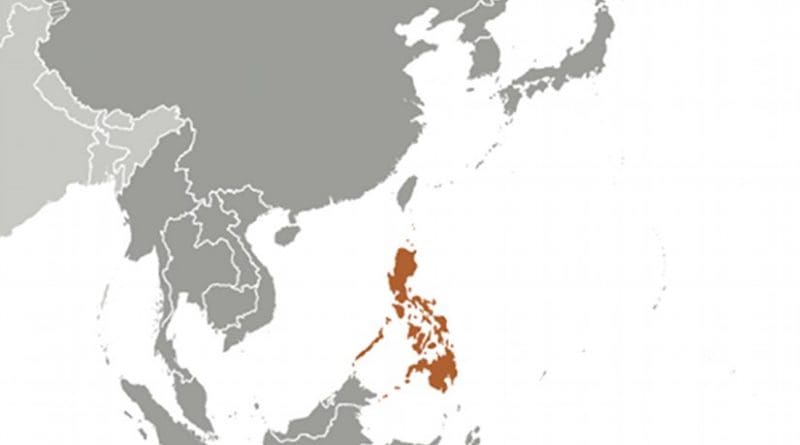Philippines: Military Identifies IS Extremist Group’s New Regional Leader
By BenarNews
The Filipino military said Wednesday that it had identified the Islamic State extremist group’s new emir for Southeast Asia as the leader of a local militant faction being targeted in an offensive underway in the southern Philippines.
Abu Zacharia (also known as Jer Mimbantas and Faharudin Hadji Satar) is believed to have survived the military operation in Lanao del Sur province that was launched on Tuesday and involved air strikes and ground troops.
“We have information that Abu Zacaria was designated as (IS) emir for Southeast Asia,” Brig. Gen. Jose Maria Cuerpo II told reporters on Wednesday. Cuerpo is the commanding officer of 103rd Infantry Brigade, which led the assault.
The offensive overran Zacharia’s base in a hinterland village in Maguing town, the military said. It announced that another suspected militant had died, bringing the death toll to three militants and one soldier.
Lanao del Sur is where hundreds of pro-IS militants laid siege to Marawi, the provincial capital, for five months in 2017.
On Tuesday, the military launched pre-dawn airstrikes while sending ground troops to attack positions of Zacharia and his men. The military has been pursuing Zacharia’s group since January, Cuerpo said, adding that a recent intelligence report warned that his group might be preparing for a new round of hostilities.
“We have evidence, that is why we launched the offensive,” Cuerpo said.
Abu Zacharia succeeded Owaida Marohombsar (also known as Abu Dar), the leader of the Daulah Islamiyah-Maute Group who was killed in Lanao del Norte, a neighboring province, sometime in March 2019. Daulah Islamiyah means Islamic State in the local language.
Cuerpo said Zacharia was part of the Maute group that seized Marawi in 2017 and engaged government forces in a five-month battle, during which as many as 1,200 people died and much of the city was destroyed.
He escaped as troops retook Marawi while the regional leader of IS, Isnilon Hapilon, was killed in the fighting there. Hapilon was succeeded by Abu Dar.
Marawi is about 37 km (33 miles) northwest of Maguing.
Another IS faction based on Jolo Island, in the Philippines’ far-southern Sulu chain, meanwhile has been led by Hatib Hajan Sawadjaan, whose group was blamed for deadly bombings in 2019 and 2020. Sawadjaan has not been heard from since July 2020 and is believed to have been killed in a clash with government troops.
Remote location
The site of the military offensive is remote and not populated by civilians. Still, it rankled communities wary of government bombs that leveled most of Marawi in 2017, Army chief Lt. Gen. Romeo Brawner Jr. told reporters.
“What the Philippine Army encountered Tuesday was the same group that we were running after when we were in Marawi. This group is remnants of the IS-Maute. Recently they have been trying to recruit more members,” said Brawner, who commanded troops in Marawi.
He said he had received phone calls from local leaders expressing concern about the possibility of new siege and whether the offensives would lead to a new round of displacements.
“I told them not to panic because the conflict is very limited to that very specific area, one small village in Maguing and it is not close to the (civilian) population,” he said. “We are not going to see another Marawi siege.”
When asked, Brawner said Tuesday’s aerial bombings were necessary to soften the enemy position, adding that militants take actions to slow troops from advancing.
“Just like what we learned during the Marawi siege, the enemy is known to lay land mines,” Brawner said. “In order to counter that, we had to use air strikes to clear the improvised explosive devices before our ground troops assaulted.”
Drieza Lininding, head of the civic organization Moro Consensus Group, questioned the military for launching air strikes without letting the people of Lanao know about the offensive.
“Many were afraid because of the powerful explosions. These are not test fires to test military hardware,” he told BenarNews. Although the offensive was in a remote location, the explosions from it could be heard faintly in Marawi and other Lanao areas.
Drieza, who is Muslim and lives in Marawi, said he would not venture to the region where the militants have encampments unless such a trip is necessary.
Ahod Ebrahim, a former Muslim separatist leader who is known widely as Murad Ebrahim and heads the Bangsamoro Autonomous Region of Muslim Mindanao, said there were reports that the bombing runs had forced an undetermined number of villagers to flee over fears of getting caught in the middle of the raids.
“We are now closely working with our partners from the municipal government of Maguing,” he said in a statement. “Security forces and ministers are already on the ground to assist our internally displaced communities and assure that they get home safely as soon as possible.”
Meanwhile, Maj. Andrew Linao, spokesman of the Zamboanga City-based Western Mindanao Command (WestMinCom), said soldiers were continuing to pursue the militants.
WestMinCom commander Lt. Gen. Alfredo Rosario Jr urged people in Lanao del Sur to remain “calm and allow us to do our job.”
“Your armed forces will not allow these terrorists to inflict harm on your respective communities. We will not stop until these lawless elements are completely crushed,” Rosario said.
Richel V. Umel and Froilan Gallardo in Cagayan de Oro, Philippines, contributed to this report.

